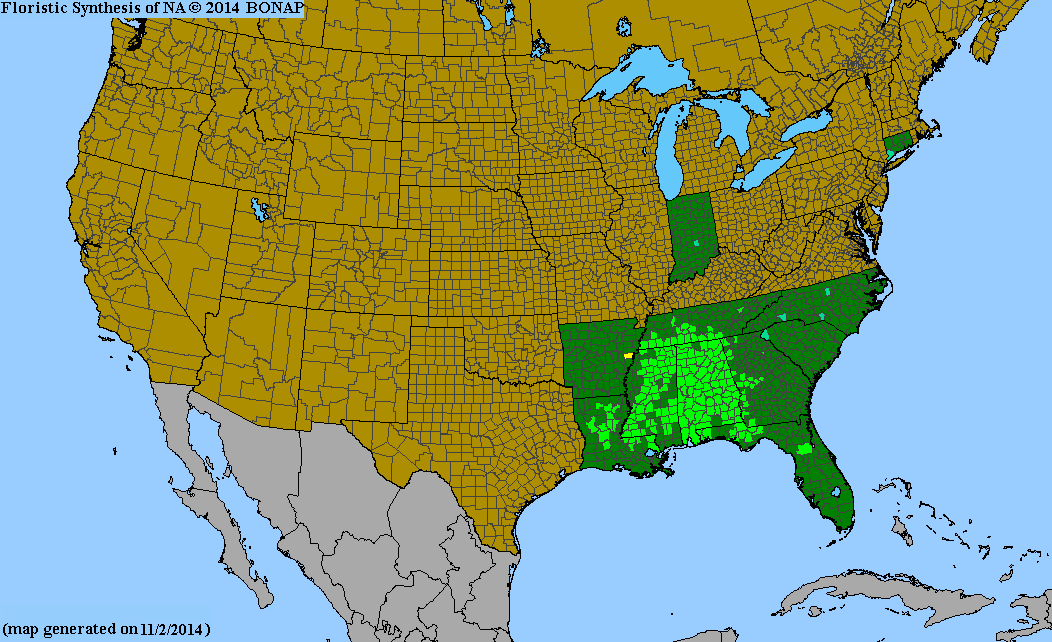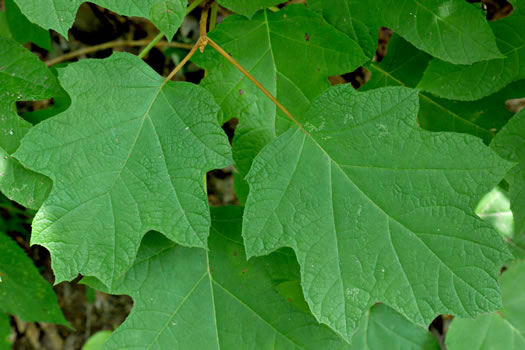Hydrangeaceae
oakleaf hydrangea
Hydrangea quercifolia
Synonyms
Hydrangea angulata
Hydrangea quinquefolia
Hydrangea radiata
Plant Type
Small Tree/Large Shrub (10-25 ft)
Life Cycle
Perennial
Typical Size
4-8 ft. tall
4-10 ft. wide
Inolerant of
Poorly Drained Soil
Propagation
By seed, By cutting
Plant Propagation Notes
Due to wide variability in the attributes of seedlings, cuttings are the preferred propagation method.
Plant Planting Notes
Provide 6-12 feet spacing.
Plants/Diseases
Susceptible to leaf blight, powdery mildew or aphids and spider mites.
Wildlife Benefits
Nectar/pollen source for pollinating insects
Leaves
The opposite leaves are 3-7 lobed and look reminiscent of an oak leaf. Blade suborbiculate to ovate, densely tomentose with serrate margins.
Flowers
Flowers in panicles of 500-1000 flowers. Most often white, but sometimes cream to pink or lavender. Each flower has 4-5 petals, about 1-1.5 inch wide.
Fruit
Hemispheric capsules.
Bark
Twigs are densely tomentose.
Toxicity
Low toxicity. If ingested, could cause nausea, stomach pain, and vomiting.

USDA Hardiness Zones
5, 6, 7, 8, 9
Light Exposure
Full Sun, Part Sun/Shade
Soil Moisture
Medium, Moist
Soil Drainage
Well-drained
Soil pH
Neutral (6.0-8.0)
Native in South Carolina?
No
Closest States Where Native
GA
Plant Native Habitat
Native in hammocks, moist forests, also in disturbed areas, thickets, or forests adjacent to urban or suburban areas.
Global Conservation Status (NatureServe)
Secure (G5)
Federal Conservation Status (USFWS)
Not Listed
Distribution Notes
Uncommon in GA

